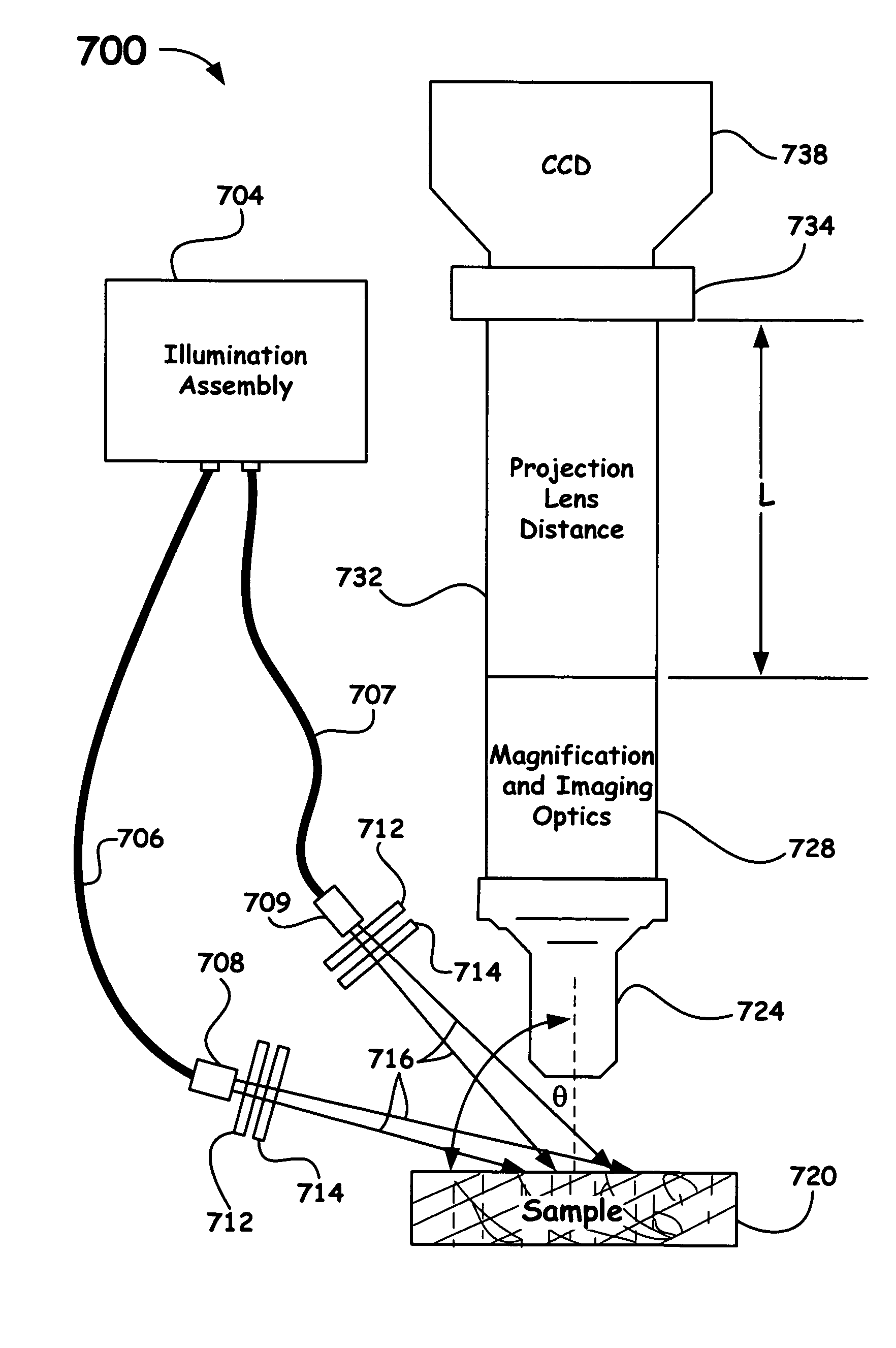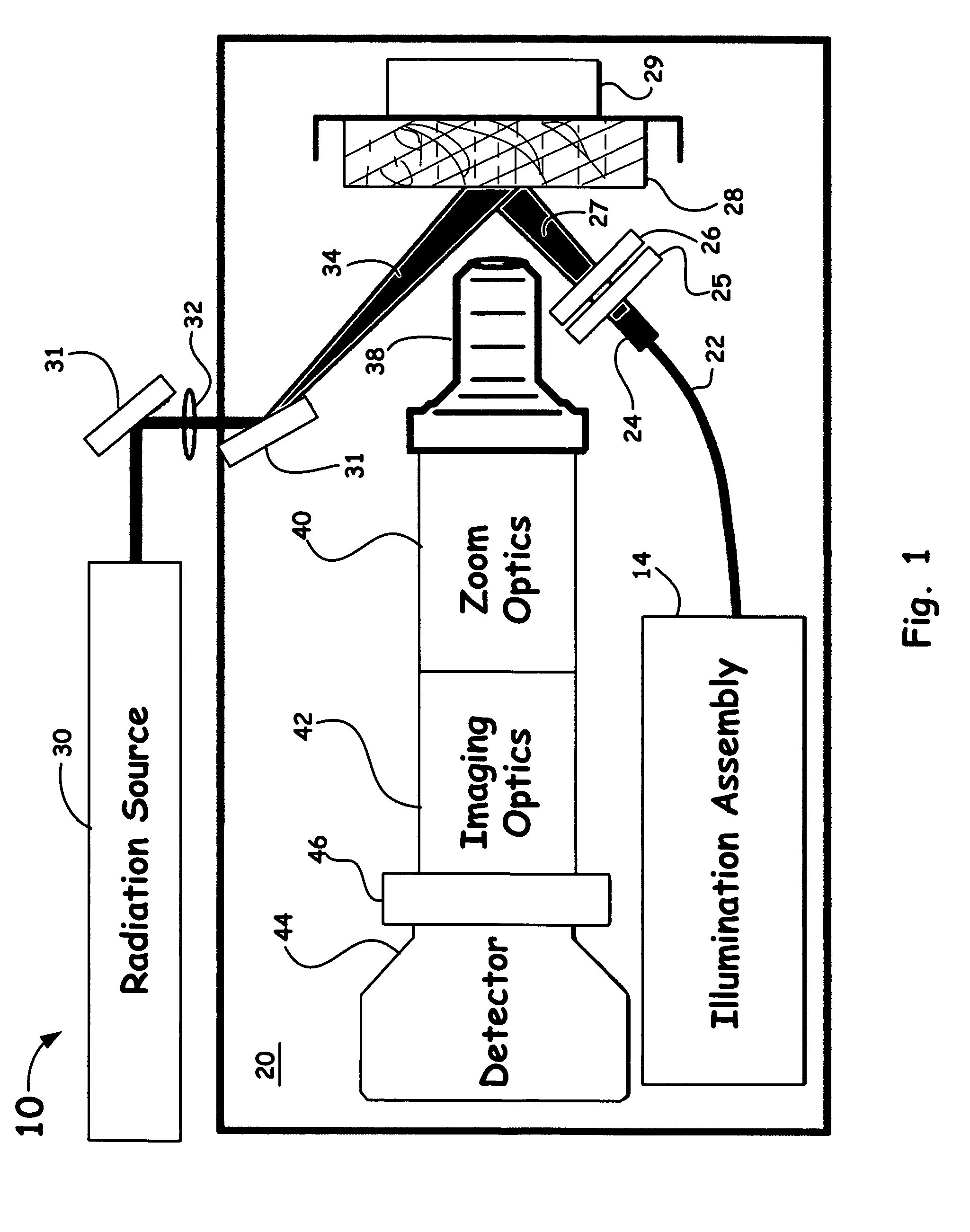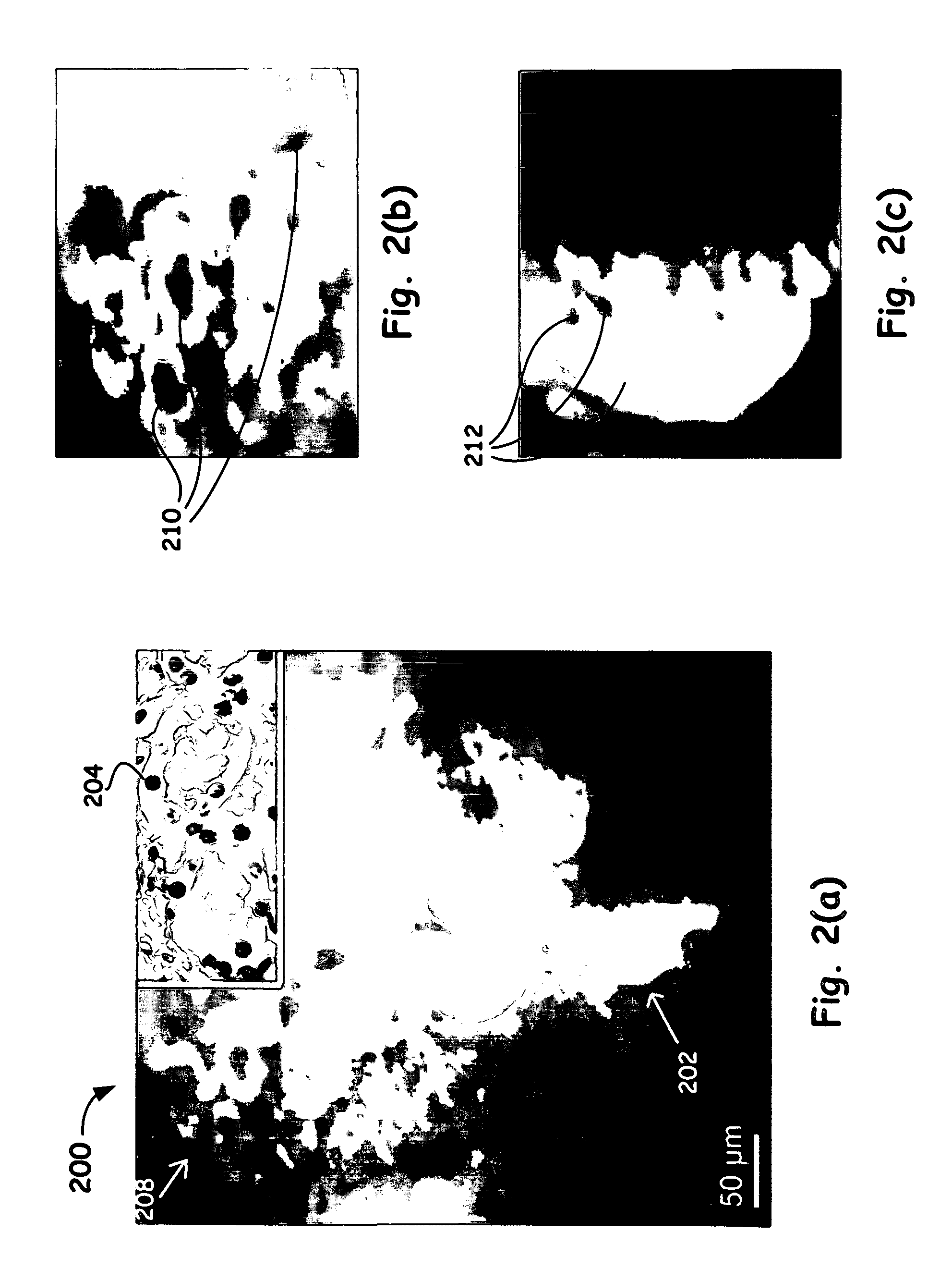Hyperspectral microscope for in vivo imaging of microstructures and cells in tissues
a hyperspectral microscope and tissue technology, applied in the field of medical diagnostics, can solve the problems of sampling error, time-consuming tissue sectioning, and requiring tissue removal from the patient, and achieve the effects of high signal sensitivity, enhanced image contrast and visibility, and high resolution
- Summary
- Abstract
- Description
- Claims
- Application Information
AI Technical Summary
Benefits of technology
Problems solved by technology
Method used
Image
Examples
Embodiment Construction
[0035]Referring now to the drawings, specific embodiments of the invention are shown. The detailed description of the specific embodiments, together with the general description of the invention, serves to explain the principles of the invention.
General Description
[0036]A real-time monitoring microscope system of the present invention (suitable for in vivo application in a clinical setting) provides: a) contrast between components of intact tissue with no processing to reveal histopathologic information, b) sufficiently high spatial resolution of down to about 0.5 μm to separate structures and components of interest and, c) fast image acquisition by utilizing pulsed sources for real time imaging of an object (tissue component or organ) that may be continuously moving due to heartbeat and blood flow.
[0037]The main strength of the microscope of the present invention for interrogation of microstructures and cells in tissues is the combined investigative hyperspectral / multimodal imaging...
PUM
 Login to View More
Login to View More Abstract
Description
Claims
Application Information
 Login to View More
Login to View More - R&D
- Intellectual Property
- Life Sciences
- Materials
- Tech Scout
- Unparalleled Data Quality
- Higher Quality Content
- 60% Fewer Hallucinations
Browse by: Latest US Patents, China's latest patents, Technical Efficacy Thesaurus, Application Domain, Technology Topic, Popular Technical Reports.
© 2025 PatSnap. All rights reserved.Legal|Privacy policy|Modern Slavery Act Transparency Statement|Sitemap|About US| Contact US: help@patsnap.com



